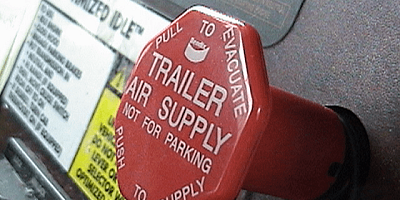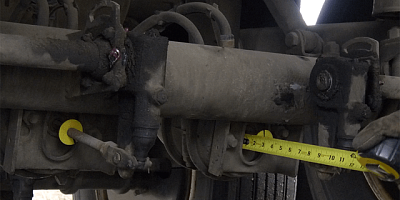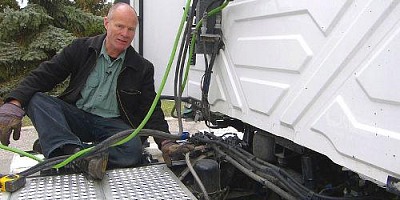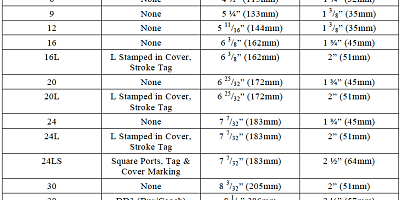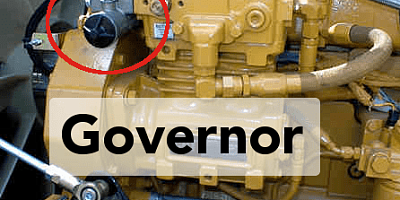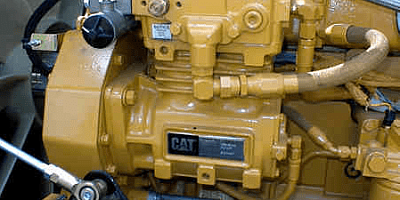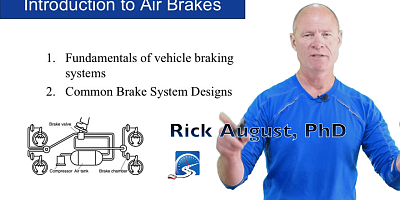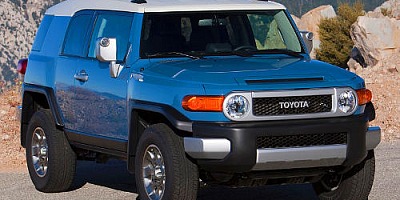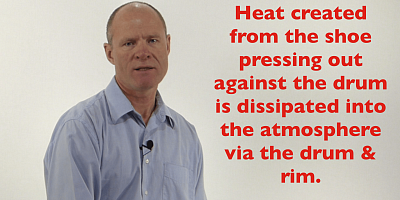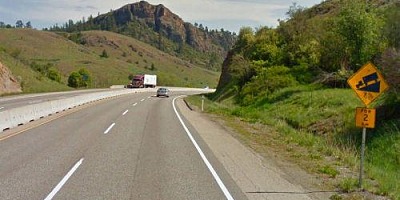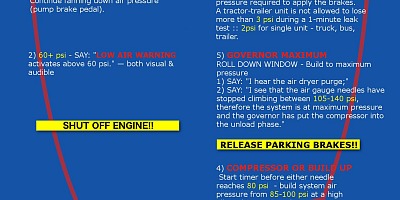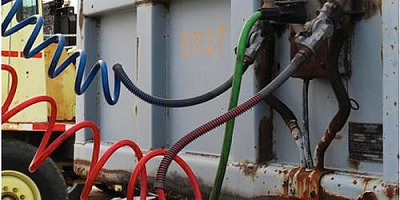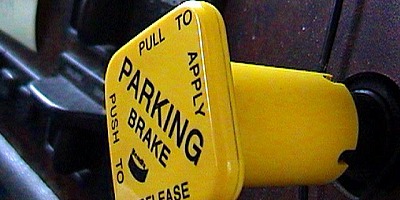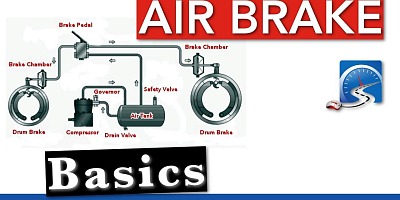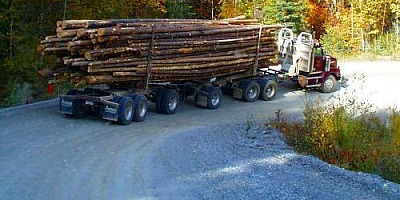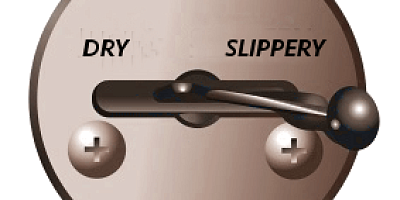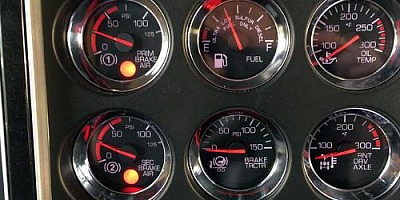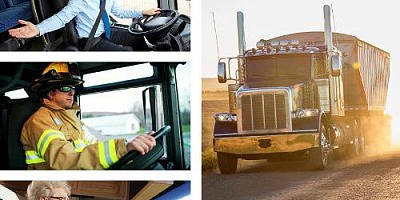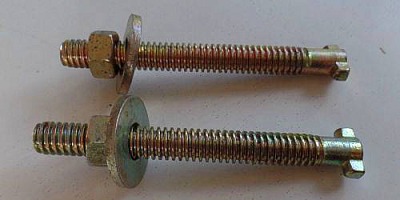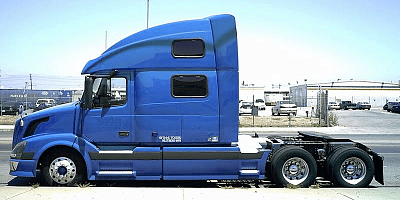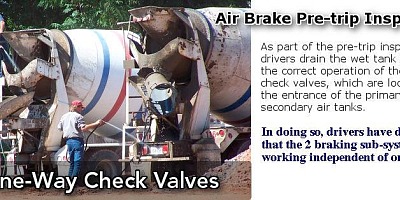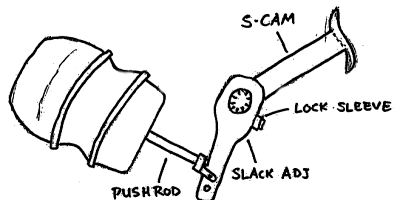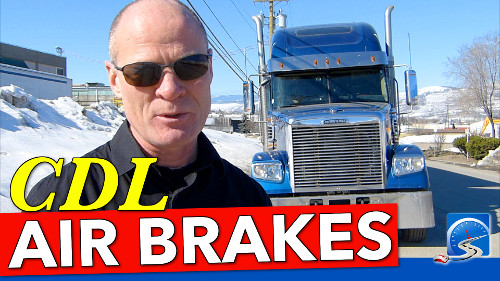Going west to or east from Vancouver on the Trans-Canada with a big vehicle. Learn about the Coquihalla summit.
The Great Downhill Decent on Canada's Coquihalla Highway | Trucking Smart
Updated Jan 2021
Introduction
Hi there smart drivers.
Rick with Smart Drive Test standing at the top of the Coquihalla summit in the sunshine.
It's a little brisk up here.
It's just on the verge of fall and for new truck drivers coming down over top of the Coquihalla highway, you're going to need chains on your truck between the first of October and the end of April.
As well, you're going to need to know how to do downhill braking.
| PASS CDL Air Brakes First Time - take this comprehensive course! | |
|
A course for truck, bus & RV drivers operating a vehicle fitted with air brakes.
This self-paced course gives you:
|
I'm just going to go over the map behind me here and give you some information about what you're up against on this 18 kilometres hill.
It's a 12-mile hill for those of you watching from the United States and might end up in British Columbia going down one of the more notorious hills, made famous by the TV series, "Highway thru Hell."
So we're going to do today, we're going to give you a bit of information on the descent down the hill from the Coquihalla summit.
We'll be right back with that information.
Stick around.
[OPENING CREDITS & MUSIC]
 Prologue
Prologue
Hi there smart drivers, Rick with Smart Drive Test, welcome back.
I'm standing here in the sunshine on the top of the Coquihalla summit.
The official name is Zopkios, but nobody calls it that - everybody calls it the Coquihalla.
It's one of the bigger hills - it's 18 kilometers or 12 miles for those of you in the States.
Today we're going to go over the board and give you a little bit information about that.
I got one driver stopped here at the brake check... the rest area and the brake check are both combined.
The trucks come in here and stop and do their pre-trip inspection.
The other thing you want to do when you come in the brake check, and as I've said before, put a flag down in your log book.
That way if something happens going down the hill you've done due diligence because you put a note in your log book that you in fact did stop at the brake check and did do the pre-trip inspection that you needed to do before you went down over the top of the hill.
At the top of the grade, it's 8% for 5 kilometers and I'll tell you that between here and the snow shed, which you can see behind me here in the sign at the three kilometer mark - it is steep and there's a runaway lane there and there's a runaway lane there for a purpose.
In the Right Gear
Because if you don't get in the right gear going down over the top of that hill you may end up on that runaway lane because you're driving a truck that got out of control on you.
So make sure that before you leave this brake check you are in the right gear: in a 13 or 18-speed transmission use five low with a tandem-tandem.
If you're running heavier or you're running a different transmission, you may need to be down in a different low gear.
For those running recreational trailers and those kinds of things--any large vehicle--you need to be down in a low gear with the Jake brake on full.
You need to be ready to come down over the top of this hill because I'll tell you from personal experience, the first bit of this hill is very steep.
Once you get past the avalanche shed, it's not too bad at six percent.
You still need to be down in a lower gear with the Jake on high, but be prepared for the hill as you can see it's a total of a 18 kilometers.
It's a long way down and this map here behind will give you the information that you need to descend the hill safely.
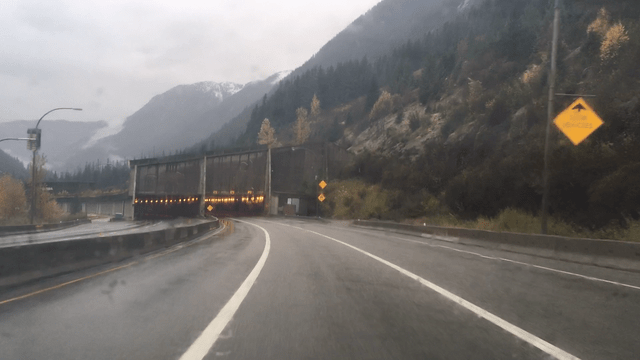 Avalanche Shed
Avalanche Shed
For those of you that haven't driven through the mountains before, a snow shed is simply in the path of an avalanche and prevents the road from being blocked.
So when you go down there, it's essentially a cement tunnel that you're going to go through and in the wintertime that prevents the road-- the Trans-Canada--from being blocked.
As you can see from the map here, it starts at zero at the brake check - its eight percent for 5 kilometres down past the snow shed.
Its got a run away lane at the half a kilometer mark and that will indicate to you that the top part of the hill is the steepest part of the hill.
So you need to be ready going down.
The snow sheds is at three kilometers.
You've got another runaway lane at about the five and a quarter kilometer mark and down near the end at 12 kilometers you got the chain off area.
If chains are required there are signs preceding the brake check area that will tell you whether you need to chain up going down the hill.
As well, if you're going down the hill and you put chains on, it's a good idea to put a single chain on one of trailer tires to stop the trailer from coming around.
As well, down there at the Portia Bridge at the 14 kilometers mark you got the Shylock road exit down at the 15 kilometer mark and it's six percent for another three kilometers down at the 16 mark.
As well just after the 16 kilometres mark you've got a runaway lane.
Down at the bottom, you got Ladner Bridge.
And beside that sign you've got the brake check advisory which tells you how to check your brakes.
Pre-Trip Inspection for Air Brake System
For an airbrake system, check the compressor and whether the pushrod travel is within limits, which on a type 30 brake chamber, which is on the rear of most buses and trucks is going to be 2 inches.
Ensure there are no audible air leaks as you're going around.
Check that the glad hands are attached and all lines are secured from the truck to the trailer.
Check that the drums brakes & bearings - you don't have any smoke coming out...you don't have any cracks or breaks, and all the components are secure, not damaged on the vehicle.
The trailer air supply valve operates properly when you pull it out and exhausts air from the trailer and applies the trailer brakes.
Pre-Trip Inspection for Hydraulic Brake System
Hydraulic brake systems - push down on the brake pedal.
The vacuum booster is operating - drums are not overheating and you'll be able to smell them if they're overheating.
The hydraulic fluid - there aren't any leaks and you've got plenty of fluid in the master cylinder.
When you open the hood, most of the newer models are going to be clear plastic so you will just be able to look at the level and not have to take the lid off the master cylinder.
The trailer brake systems - electric, surge, and vacuum brakes.
And this is for recreational vehicles and vehicles pulling utility trailers.
Disconnect the brake system from the towing vehicle for electric and vacuum brake systems.
Essentially what they're talking about there is the emergency brakes on the trailer: that if the trailer disconnects from the towing unit that the brakes on the trailer are going to activate.
Disconnect the breakaway devices to activate breakaway devices and lock trailer brakes on.
Electric brakes - set away switch; surge brakes - pull and lock mechanical lever on surge brakes.
It's essentially a spring mechanism on the hitch on the front of the trailer - the towbar, so when it surges forward it activates the brakes on the trailer.
Vacuum and air activated hydraulic brakes - disconnect both hoses to the trailer and perform a tug test by attempting to pull the trailer.
The trailer should not be locked and not move or skid.
Reconnect the breakaway devices - so essentially on a utility trailer or a recreational vehicle you want to test all of the trailer brakes and test the breakaway systems before you end up down over the top.
If you've got an automatic vehicle, you want to be in a lower gear - probably down in the second or first depending on how heavy the trailer is that you're pulling before you go over the top of the hill.
Landmarks & Mile Markers to Know your Location
 The other thing you can do with the information here on this map - take note of what the mileage is on your odometer and take the major landmarks going down on the map here, that way you know where the runaway lanes and those things are going to be if you get into trouble going down the hill.
The other thing you can do with the information here on this map - take note of what the mileage is on your odometer and take the major landmarks going down on the map here, that way you know where the runaway lanes and those things are going to be if you get into trouble going down the hill.
You know there's going to be a runaway lane there.
As well, you know that the avalanche tunnel is going to be at the three kilometer mark.
So once you get to the avalanche tunnel, you can let off a little bit, maybe shift up one gear if you've been down here before.
If you haven't been down here before, just take it slow, and take it easy because like I say about downhill braking: "you can go downhill too slow a thousand time; the one time you go down too fast, maybe you're last.
So proceed with caution until you get some experience with the vehicle that you're operating and you get some experience with the hill.
Question for my smart drivers:
Do you have any tips for new drivers descending from the the Coquihalla Summit so they don't experience brake fade?
Salutations
I'm Rick with Smart Drive Test.
Thanks very much for watching.
If you like what you see here share, subscribe, leave a comment down in the comment section.
As well, hit that thumbs up button.
Check out the videos below - check out the cards in the upper right-hand corner there.
Lots of great information for those drivers getting a license or working towards a career as a truck or bus driver.
Thanks again for watching.
Good luck on your road test, and remember pick the best answer ,not necessarily the right answer.
Have a great day.
Bye now!



